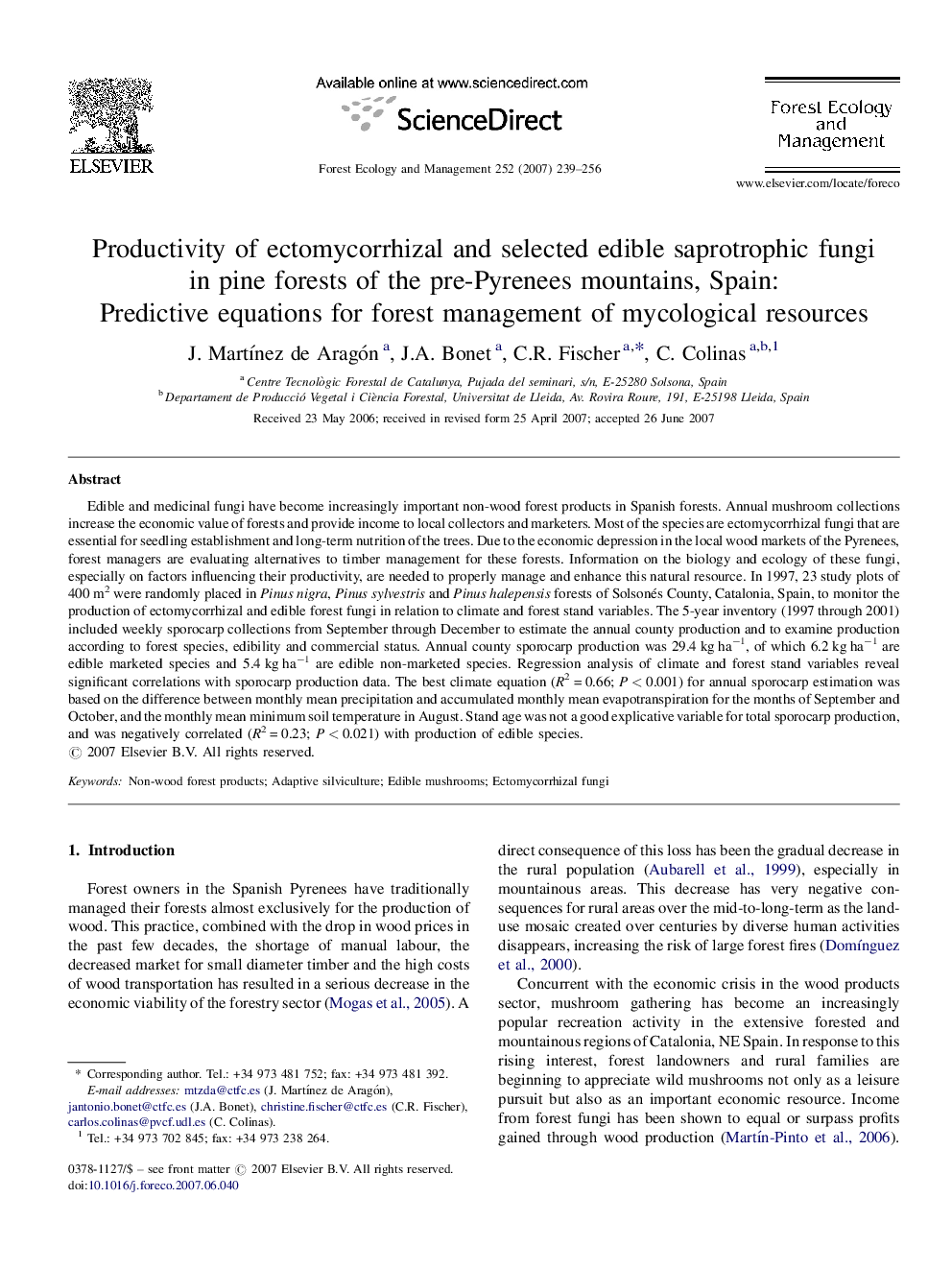| کد مقاله | کد نشریه | سال انتشار | مقاله انگلیسی | نسخه تمام متن |
|---|---|---|---|---|
| 90068 | 159364 | 2007 | 18 صفحه PDF | دانلود رایگان |

Edible and medicinal fungi have become increasingly important non-wood forest products in Spanish forests. Annual mushroom collections increase the economic value of forests and provide income to local collectors and marketers. Most of the species are ectomycorrhizal fungi that are essential for seedling establishment and long-term nutrition of the trees. Due to the economic depression in the local wood markets of the Pyrenees, forest managers are evaluating alternatives to timber management for these forests. Information on the biology and ecology of these fungi, especially on factors influencing their productivity, are needed to properly manage and enhance this natural resource. In 1997, 23 study plots of 400 m2 were randomly placed in Pinus nigra, Pinus sylvestris and Pinus halepensis forests of Solsonés County, Catalonia, Spain, to monitor the production of ectomycorrhizal and edible forest fungi in relation to climate and forest stand variables. The 5-year inventory (1997 through 2001) included weekly sporocarp collections from September through December to estimate the annual county production and to examine production according to forest species, edibility and commercial status. Annual county sporocarp production was 29.4 kg ha−1, of which 6.2 kg ha−1 are edible marketed species and 5.4 kg ha−1 are edible non-marketed species. Regression analysis of climate and forest stand variables reveal significant correlations with sporocarp production data. The best climate equation (R2 = 0.66; P < 0.001) for annual sporocarp estimation was based on the difference between monthly mean precipitation and accumulated monthly mean evapotranspiration for the months of September and October, and the monthly mean minimum soil temperature in August. Stand age was not a good explicative variable for total sporocarp production, and was negatively correlated (R2 = 0.23; P < 0.021) with production of edible species.
Journal: Forest Ecology and Management - Volume 252, Issues 1–3, 30 November 2007, Pages 239–256